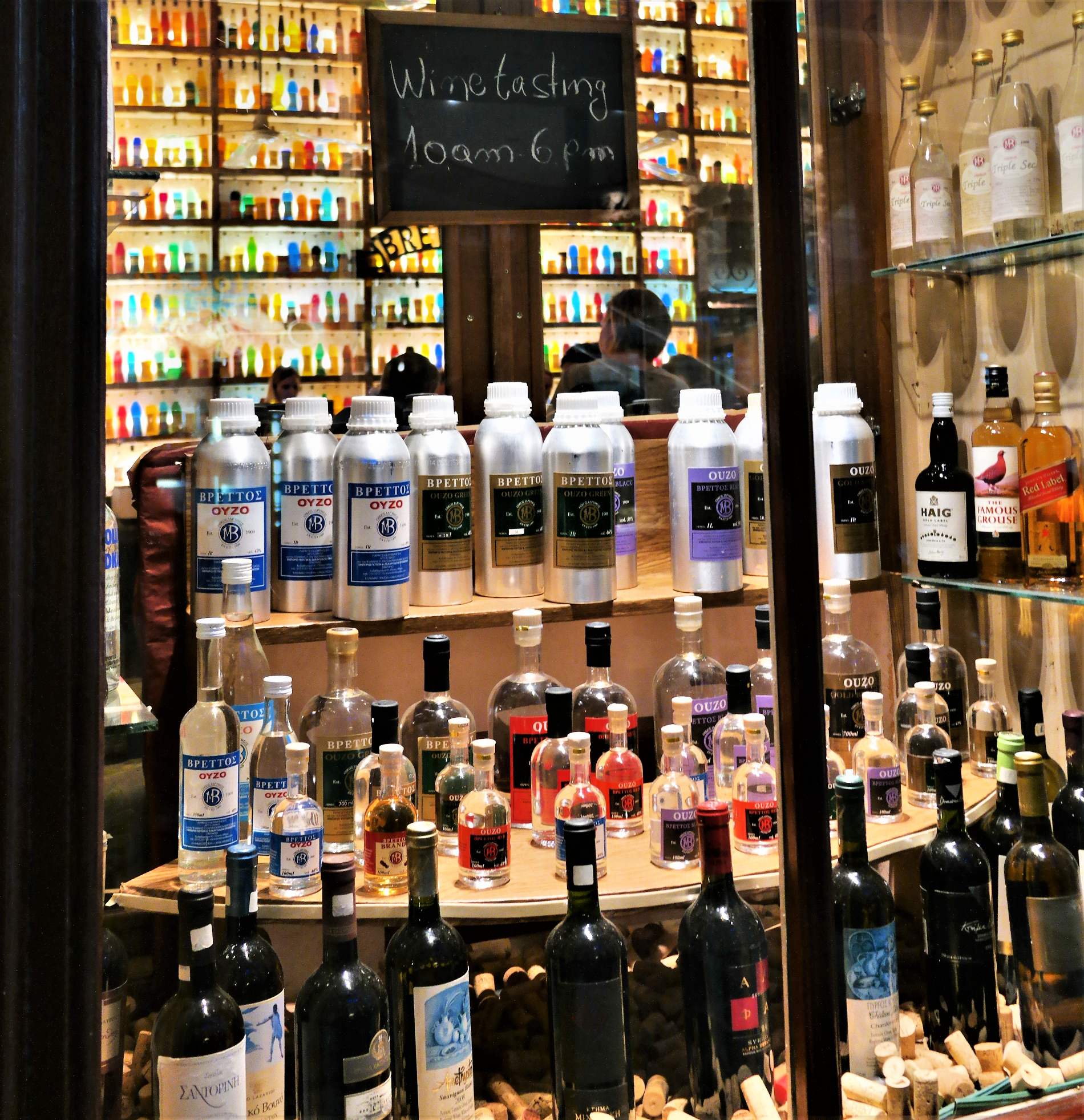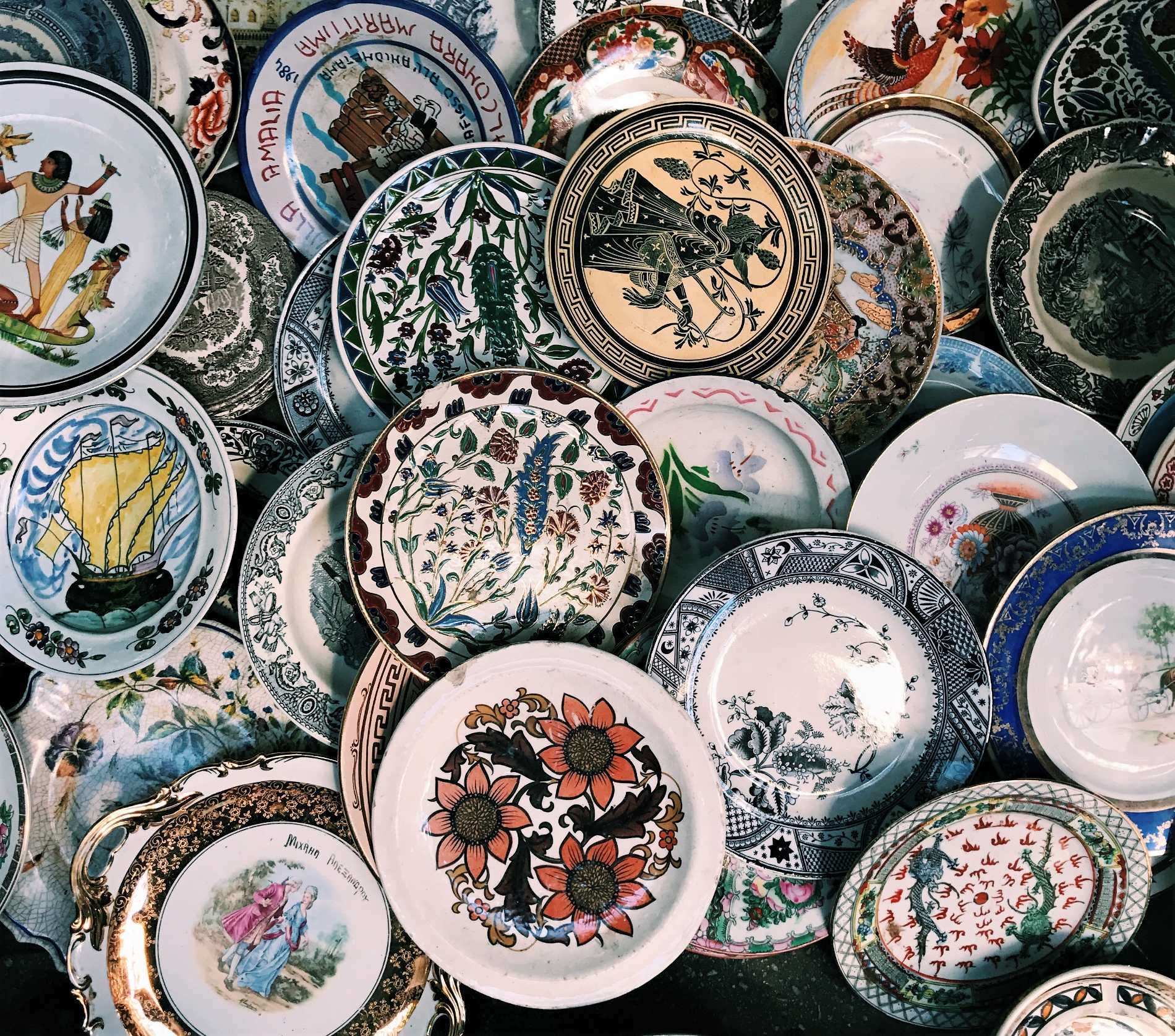What to Buy in Greece - A List of Our Top 10 Souvenirs
What you should buy from Athens by Truevoyagers. Photo source: Truevoyagers
Whenever we visit another country we naturally want to fill our bags with memorabilia, objects that remind us of our trip. A souvenir has a special significance, as apart from the object’s practical use, it is associated with the location and our personal memories. Here are a few suggestions on what to get as souvenirs from Greece, either to give them as presents to loved ones back home or for your own personal use.
1. Anything from olive trees!
Extra virgin olive oil is one of the top things to buy in Greece. Source: Truevoyagers
Cultivation of the olive tree in Greece goes back to the Early Bronze Age Crete (3500 BC) and ever since has played an important role in Greek mythology, cuisine and everyday life. It symbolizes peace and prosperity, while in ancient Athens it has also a sacred symbolic meaning, due to its connection with the goddess Athena. Greek extra virgin olive oil is of exceptional quality and taste and is perfect for cooking, salads or even simply on its own with some bread. Furthermore, you can buy delicious olives from the market (laiki agora), where you can taste them before you buy, while handmade kitchenware from olive tree wood are an excellent souvenir choice.
2. Worry beads or Kompoloi
Various types and colors of the traditional Greek kompoloi. Source: Truevoyagers
The use of the kompoloi in Greek culture started during the Turkish occupation and plays an important part in Greek tradition as a means of relaxation, a stress reducer and a companion to your solitude. It is also connected with rebetiko music (music associated with the poorer masses during early 20th century until 1950s), as a trademark of the rebetes. Amber and coral beads are generally the ones preferred stung on a silk cord. Traditionally, it should also feature a pappas (a larger last bead) and the funda (the tuft at the end of the kompoloi). However, be careful not to buy foreign imports, but authentic handmade ones, like from Kompologadiko near Syntagma square.
See the best of Athens in a day!
Discover everything Athens has to offer even if you are visiting the city only for one day!
3. A backgammon set or Tavli
Backgammon is one of the most popular games played at the Greek kafeneia. Source: Truevoyagers
Backgammon is extremely popular in Greece, both between younger and older people, and you may often see people playing when in kafeneia, alongside their coffee or drink. It constitutes of a wooden frame, 30 checkers of two different colors (15 for each player) and two dice. The most common games played with tavli are Portes, Plakoto and Fevga. Tavli is an amusing way to spend time with your friends. The rules are not too complicated and can be easily learnt, while it guarantees you quality time with your companions.
4. Ouzo
Ouzo in various bottles and sizes in Vrettos bar, Psyrri, Athens. Source: Truevoyagers
Another must-try Greek product is Ouzo, an anise-flavored aperitif, which is considered Greece’s national drink and since 2006 is protected from the European Union with Designation of Origin. Ouzo dates back only to 1856 when Nikolaos Katsaros and his family opened the very first ouzo distillery in Tyrnavos (giving the name to the ouzo Tyrnavou Katsaros, produced until today). Due to ouzo’s unique taste you will either love it or hate it, but you most definitely need to try it, always of course with caution as with any alcoholic beverage. Greeks also believe that ouzo cures many illnesses and is used as medicine for flue, menstruation and toothache. It is better enjoyed in summer months accompanied by Greek mezedes (a selection of small traditional dishes like octopus and fresh cheeses).
Interested in experiencing something new?
Join our Greek pottery Workshop and create your own unique Greek souvenir!
5. A Karagiozis figurine/Karagiozis set
The shadow puppet of Greek Karagiozis in many different variations. Source: Truevoyagers
Karagiozis is a shadow puppet much loved by generations and generations of Greek kids and adults. He has influenced Greek folklore so much that probably all of Greece knows him, while characteristic phrases are used in Greek daily speech (eg. We’ll eat, we’ll drink, but we will sleep hungry) and even the word Karagiozis is used as an insult (something like a clown). The name is borrowed from the Turkish Karagöz, meaning dark eye. Karagiozis earned popularity in Greece in the 19th century, during the ottoman occupation and was hellenized by Dimitrios Sardounis alias Mimaros. The main character is a poor Greek during the ottoman-rule, representing the common folk, and the themes of the plays are satirical, historical, social and political. You can buy individual figurines or a whole set in the area of Plaka, with some of them being a little bit more expensive as they are generally considered collectable items.
6. Mastiha from Chios island
Greek loukoumi with mastic flavor in the official Mastiha shop in Athens. Source: Truevoyagers
This natural resin obtained from the mastic trees of Chios island (Pistacia lentiscus) is actually the world’s first chewing gum and it has been used since Greek Antiquity for its medicinal and pharmaceutical qualities. Hippocrates himself, the father of medicine, suggested mastic for cleaning the teeth, for curing digestion problems and even for a common cold. Chios Mastiha, or as it is also known due to its shape the "tears of Chios”, is also protected by the European Union as a product with Designation of Origin. You can find many mastic flavored products depending on your personal tastes, like mastic liqueurs, chewing gum, Greek loukoúmia (Turkish delight) and my own personal favorite ypovríchio (submarine), a gummy substance you dip with a spoon in a glass of cold water, which kids will love.
7. Handmade leather sandals from Monastiraki
Greek leather sandals are really popular among costumers and tourists worldwide. Source: Truevoyagers
While you are strolling around Athens, you will come across a lot of shops selling leather artifacts and leather sandals, especially in Monastiraki and Plaka areas. Leather sandals, reminding a little bit of classical Greek style, are much loved by locals and are probably the ultimate tourist favorite. Apart from being usually of very good quality they are also comfortable to wear and very convenient during summer time in Greece. You can find them in many different designs and colors, so they will match your preferences and personal style. On Agias Theklas St. 2 you will find the leather shop of Stavros Melissinos, who has even made shoes for the Beatles and Anthony Queen!
8. A mati talisman for the evil eye
The peculiar blue talisman against evil eye that we call "mati" can be found everywhere in Monastiraki flea market. Source: Truevoyagers
During your stay in Greece you will most likely notice this peculiar blue talisman that resembles an eye, in different shapes and sizes, usually on jewelery. The mati (eye) is considered to protect the user from the evil eye and is extremely popular in Greek folklore. The evil eye is generally a curse given to someone by a malevolent glare, due to feelings of anger or jealousy or even admiration, and it is believed to bring misfortune to the person receiving the curse. Belief in the evil eye goes back to at least the 6th century BC. It has been mentioned in the writings of Hesiod, Plato and Plutarch, among others, and during classical antiquity it was often depicted in ceramic drinking vessels. The mati-charm, according to Greek tradition, will protect you and your beloved ones from any bad glares and send the evil thoughts back to the onlooker.
9. Handmade ceramics from the Greek islands
Handmade and hand-painted ceramics can be found in the Greek islands or in Athens' flea markets. Source: Teapot
If you happen to visit one of Greece’s beautiful islands and you have enough space in your luggage, I would suggest you purchased handmade ceramics from traditional workshops made locally. You will find handmade pottery in most of the islands, like in Paros, Rhodes or Milos. The island of Sifnos is very well-known for its ceramics and has a very long history in the art of pottery making. There are traditional workshops in Vathy, Kamares and Platyialos villages, but you will find shops selling ceramic artifacts all around the island. The workshop of my favorite Sifnian potter, Adonis Kalogirou, is located in Kamares and there you can also see his work and purchase ceramics in very reasonable prices. They are excellent gift ideas or for yourself to enjoy at home.
A unique way of seeing the major sights of the city
Explore the most Instagram-worthy spots of Athens under the guidance of a local expert!
10. Bouzouki
All different types of "bouzouki" as found in Pandrossou str. in Monastiraki. Source: Truevoyagers
If you are or know a music lover and want to get something different, you may want to consider a bouzouki, a musical instrument that has a very special place in the hearts of Greeks. Bouzouki’s ancestor is pandura, which has been in use in ancient Greece since 4th century BC. Bouzouki itself became popular after the 1919-1922 war in Asia Minor between Greece and Turkey, from the waves of immigrants that fled to Greece. Soon it became popular and the main instrument in the rebetiko subculture. You can get a nice bouzouki for example at the Bouzouki Shop in Monastiraki (31 Pandrossou Street) or from Mousika Organa (Ifaistou 36). If you want a smaller and less expensive option they also have miniature ones!
Did you like our post? Pin it for later!
What to Buy in Greece: A List of Our Top Souvenirs by Truevoyagers
Would you like to create your own souvenirs rather than buy them? We organize the "Make your Own Souvenir Workshop" where you can come to real contact with the most ancient form of art, pottery, make your own unique sculptures or ceramics using clay and take them home with you!
Words: Saima Androutsopoulou

























